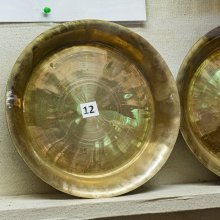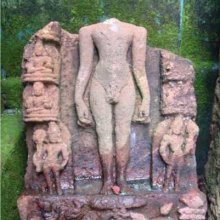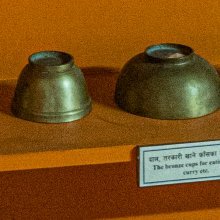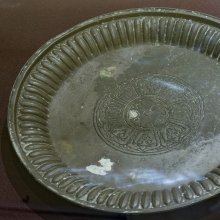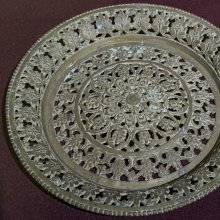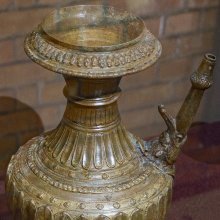Tala, Tāla, Talā, Ṭala, Tāḷa, Taḷā, Tāḻa: 52 definitions
Introduction:
Tala means something in Buddhism, Pali, Hinduism, Sanskrit, Jainism, Prakrit, the history of ancient India, Marathi, Hindi, biology, Tamil. If you want to know the exact meaning, history, etymology or English translation of this term then check out the descriptions on this page. Add your comment or reference to a book if you want to contribute to this summary article.
The Sanskrit terms Tāḷa and Taḷā can be transliterated into English as Tala or Talia, using the IAST transliteration scheme (?).
Alternative spellings of this word include Taal.
Images (photo gallery)
(+20 more images available)
In Hinduism
Shilpashastra (iconography)
Source: Wisdom Library: Śilpa-śāstraTala (तल) is a synonym for adhiṣṭhāna (‘platform’), according to the Mayamata 14.40. The word adhiṣṭhāna is Sanskrit technical term referring to the “base” or “platform” on which a structure is built.
Source: Google Books: The Theory of Citrasutras in Indian PaintingTāla: one of the two basic units of measurement, according to the Viṣṇudharmottara Purāṇa; the other being called Aṅgula. But not all the early texts use the word tāla; in the Bṛhat Saṃhitā and Citralakṣaṇa of Nagnajit, for example, the term tāla was not employed but what is important is that the concept of a palm length as module for computing parts of the body was implicit.
Source: McGill: The architectural theory of the Mānasāra (iconography)Tāla (ताल).—Even though each of these options of measurement are elabarated further by the Mānasāra, the most elaborate treatment is reserved for the tāla option. Tāla, the system of iconometry, is based on the “span”. Tāla has the mearungs of “palm” (of the hand) as well as “span” (that is, the distance between the stretched thumb and middle finger). This measurement is equal to that of the face from hair to chin.
Among the several iconometric schemes possible with the tāla, the text elaborates the daśatāla, “ten-span”, scheme. In the daśatāla scheme, the height of the image has ten basic divisions (each division being one tāla). Each tāla has twelve subdivisions (echoing the division 12 aṅgula = 1 vitasti); thus basically, the height in the daśatāla scheme has 120 (10 x 12) subdivisions.
Source: Shodhganga: The significance of the mūla-beras (śilpa)1) Tāla (ताल) refers to a “unit of measurement”, as defined in the texts dealing with śilpa (arts and crafs), known as śilpaśāstras.—The unit of measurement chosen for stating the proportions of the images of the various gods, goddesses and other beings belonging to the Hindu pantheon is called the tāla. For measuring lengths along plumb-lines an instrument called the lamba-phalaka is employed.
2) Tāla refers to “cymbals”, representing one of the several “attributes” (āyudha) or “accessories” of a detiy commonly seen depicted in Hindu iconography.—The śilpa texts have classified the various accessories under the broad heading of āyudha or karuvi (implement), including even flowers, animals, and musical instruments. Some of the work tools held in the hands of deities are, for example, Tāla.

Shilpashastra (शिल्पशास्त्र, śilpaśāstra) represents the ancient Indian science (shastra) of creative arts (shilpa) such as sculpture, iconography and painting. Closely related to Vastushastra (architecture), they often share the same literature.
Dharmashastra (religious law)
Source: Google Books: Manusmṛti with the ManubhāṣyaThe term ‘tala’ stands for the inner part (the palm). That inner portion of the hand which extends up to the long palm-line and faces one’s own eyes is the part ‘dedicated to Brahmā.’ (Manubhāṣya, II.62)
Source: Google Books: Manusmṛti with the ManubhāṣyaThe term ‘tala’ stands for the inner part (the palm). That inner portion of the hand which extends up to the long palm-line and faces one’s own eyes is the part ‘dedicated to Brahmā.’
‘Tala’ is the palm; and that part of the palm which extends from the base of the thumb to the first long line in it constitutes the ‘Brāhma-tīrtha’; (Vīramitrodaya (Āhnika, p. 77))
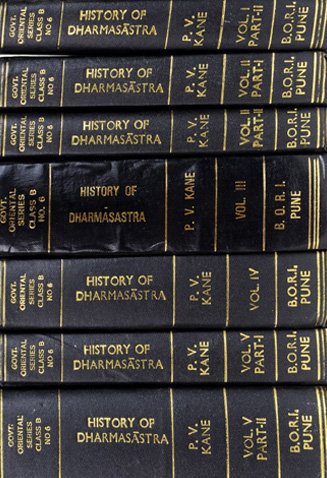
Dharmashastra (धर्मशास्त्र, dharmaśāstra) contains the instructions (shastra) regarding religious conduct of livelihood (dharma), ceremonies, jurisprudence (study of law) and more. It is categorized as smriti, an important and authoritative selection of books dealing with the Hindu lifestyle.
Vastushastra (architecture)
Source: Wisdom Library: Vāstu-śāstraTala (तल) is a Sanskrit technical term denoting a “residence” in general, according to the lists of synonyms given in the Mānasāra XIX.108-12, which is a populair treatise on Vāstuśāstra literature.
Source: OpenEdition books: Architectural terms contained in Ajitāgama and Rauravāgama1) Tala (तल) refers to “- 1. base, level of the base § 3.14. - 2. level §§ 3.12; 4.35.”.—(For paragraphs cf. Les enseignements architecturaux de l'Ajitāgama et du Rauravāgama by Bruno Dagens)
2) Tāla (ताल) refers to “- 1. span (half cubit) § 2.1. - 2. unit of measurement for the images §2.4.”.—(For paragraphs cf. Les enseignements architecturaux de l'Ajitāgama et du Rauravāgama by Bruno Dagens)
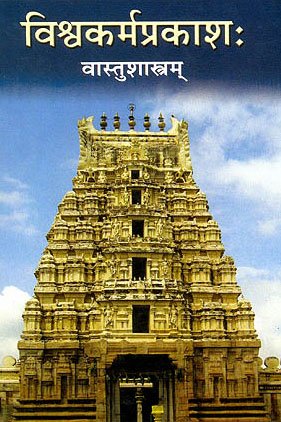
Vastushastra (वास्तुशास्त्र, vāstuśāstra) refers to the ancient Indian science (shastra) of architecture (vastu), dealing with topics such architecture, sculpture, town-building, fort building and various other constructions. Vastu also deals with the philosophy of the architectural relation with the cosmic universe.
Ayurveda (science of life)
Dietetics and Culinary Art (such as household cooking)
Source: Shodhganga: Dietetics and culinary art in ancient and medieval IndiaTāla (ताल) refers to “palm fruit” and is mentioned in a list of potential causes for indigestion in the 17th century Bhojanakutūhala (dravyaguṇāguṇa-kathana), and is commonly found in literature dealing with the topics of dietetics and culinary art, also known as Pākaśāstra or Pākakalā.—A complete section in Bhojanakutūhala is devoted for the description of agents that cause indigestion [viz., tāla (palm fruit)]. These agents consumed on a large scale can cause indigestion for certain people. The remedies [viz., bakula fruit (Mimusops elengi)] for these types of indigestions are also explained therewith.
Kalpa (Formulas, Drug prescriptions and other Medicinal preparations)
Source: Shodhganga: Edition translation and critical study of yogasarasamgrahaTāla (ताल) refers to the medicinal plant known as “Borassus flabellifer Linn.” and is dealt with in the 15th-century Yogasārasaṅgraha (Yogasara-saṅgraha) by Vāsudeva: an unpublished Keralite work representing an Ayurvedic compendium of medicinal recipes. The Yogasārasaṃgraha [mentioning tāla] deals with entire recipes in the route of administration, and thus deals with the knowledge of pharmacy (bhaiṣajya-kalpanā) which is a branch of pharmacology (dravyaguṇa).
Unclassified Ayurveda definitions
Source: Wisdom Library: Āyurveda and botanyTāla (ताल) is a Sanskrit word referring to Borassus flabellifer (palmyra palm), a plant species in the Arecaceae family. It was identified by Satish Chandra Sankhyadhar in his translation of the Rājanighaṇṭu (verse 9.83), which lists the following synonyms: Tāladruma, Patrī, Dīrghaskandha, Dhvajadruma, Tṛṇarāja, Madhurasa, Madāḍhya, Dīrghapādapa, Cirāyu, Tarurāja, Gajabhakṣya, Dṛḍhacchada, Dīrghapatra, Gucchapatra and Āsavadruma.
According to the Carakasaṃhitā (sūtrasthāna 27), Tālapralamba (tender top portion of tāla stem) forms part of the Śākavarga (vegetables) group of medicinal plants.
Source: gurumukhi.ru: Ayurveda glossary of termsTala (तल):—[talam] Palm or sole. Anterior or flexor surface of the hand from wrist to finger or under part of the foot.

Āyurveda (आयुर्वेद, ayurveda) is a branch of Indian science dealing with medicine, herbalism, taxology, anatomy, surgery, alchemy and related topics. Traditional practice of Āyurveda in ancient India dates back to at least the first millenium BC. Literature is commonly written in Sanskrit using various poetic metres.
Purana and Itihasa (epic history)
Source: archive.org: Puranic EncyclopediaTāla (ताल).—A hell. There are many hells under water including Tāla. (Chapter 6, Aṃśa 2, Viṣṇu Purāṇa).
Source: archive.org: Shiva Purana - English Translation1) Tāla (ताल) refers to “(dancing) tunes”, according to the Śivapurāṇa 2.3.47 (“The ceremonious entry of Śiva”).—Accordingly, as Brahmā narrated to Nārada: “[...] Musicians sang auspicious songs. Dancing girls danced to the tune (nānā-tāla-samanvita). Accompanied by these, attended upon by all important gods and with flowers showered on Him delightedly, the sole kinsman of the universe walked ahead shedding lordly splendour. Lord Śiva, eulogised with many hymns of praise, entered the sacrificial altar. He was duly worshipped. [...]”.
2) Tala (तल) refers to the “bottom surface” (of a chariot), according to the Śivapurāṇa 2.5.8 (“The detailed description of the chariot etc.”).—Accordingly, as Sanatkumāra narrated to Vyāsa: “The divine chariot of lord Śiva consisting of all the worlds was built by Viśvakarman with devoted effort. [...] The Lokāloka mountain formed its side steps. The lake Mānasa etc. constituted its brilliant outer and oblique steps. The Varṣa mountains constituted the cords and chains all round the chariot. All the residents of the region Tala constituted the bottom surface (tala) of the chariot [talāstasya rathasyā'tha sarve talanivāsinaḥ]. [...]”
Source: Cologne Digital Sanskrit Dictionaries: The Purana Index1) Talā (तला).—One of the ten daughters of Raudrāśva.*
- * Vāyu-purāṇa 99. 126.
2a) Tāla (ताल).—Span, employed in describing measurement in iconography; nine tālas generally for deities, dānavas and kinnaras; measurement made usually by the middle finger.*
- * Brahmāṇḍa-purāṇa I. 7. 97; Matsya-purāṇa 258. 16 and 75; 259. 1-2; Vāyu-purāṇa 8. 103.
2b) —(c)—kingdom watered by the R. Cakṣa.*
- * Brahmāṇḍa-purāṇa II. 18. 46.
2c) A hell into which falls one, who murders a Kṣatriya or Vaiśya or Brahmana, or one who defiles a preceptor's bed.*
- * Brahmāṇḍa-purāṇa IV. 2. 146; Vāyu-purāṇa 101. 146, 153; Viṣṇu-purāṇa II. 6. 2.

The Purana (पुराण, purāṇas) refers to Sanskrit literature preserving ancient India’s vast cultural history, including historical legends, religious ceremonies, various arts and sciences. The eighteen mahapuranas total over 400,000 shlokas (metrical couplets) and date to at least several centuries BCE.
Shaktism (Shakta philosophy)
Source: Wisdom Library: Śrīmad Devī Bhāgavatam1) Tāla (ताल) refers to one of the thirty hells (naraka) mentioned in the Devī-bhāgavata-purāṇa 8.21 (on the narrative of hells). The hells are destinations where dead beings brought by messengers of Yama (the God of the Pitṛs), and get punished by him according to their karmas and faults.
2) Tāla (ताल) is the name of a tree found in maṇidvīpa (Śakti’s abode), according to the Devī-bhāgavata-purāṇa 12.10. Accordingly, these trees always bear flowers, fruits and new leaves, and the sweet fragrance of their scent is spread across all the quarters in this place. The trees (e.g. Tāla) attract bees and birds of various species and rivers are seen flowing through their forests carrying many juicy liquids. Maṇidvīpa is defined as the home of Devī, built according to her will. It is compared with Sarvaloka, as it is superior to all other lokas.
The Devī-bhāgavata-purāṇa or Śrīmad-devī-bhāgavatam (mentioning Tāla), is categorised as a Mahāpurāṇa, a type of Sanskrit literature containing cultural information on ancient India, religious/spiritual prescriptions and a range of topics concerning the various arts and sciences. The whole text is composed of 18,000 metrical verses, possibly originating from before the 6th century.
Source: Google Books: Manthanabhairavatantram1) Tala (तल) refers to the “soles” (viz., the soles of the feet), according to the Manthānabhairavatantra, a vast sprawling work that belongs to a corpus of Tantric texts concerned with the worship of the goddess Kubjikā.—Accordingly, “Above [Śiva] is the tranquil (energy called) Śivā. [...] If he desires liberation, the one who possesses (this) glory should abide on that plane. [...] And then the (Supreme) State arises and that state is Śāmbhavī, (otherwise called) Śivā. [...] Pulsating there, he should ascend from the foundation of the root (Wheel) as does a monkey (along) a tree, from the soles of the feet up to the top of the head [i.e., āpāda-tala-mūrdhānta]. Then comes liberation in the venerable Śrīkrama. Beyond that is the Transmental. [...]”.
2) Tāla (ताल) refers to one of the thirty-six sacred trees, according to the Ṣaṭsāhasrasaṃhitā, an expansion of the Kubjikāmatatantra: the earliest popular and most authoritative Tantra of the Kubjikā cult.—Accordingly, “According to the Kula teaching (these) [i.e., Tāla] are the most excellent Kula trees that give accomplishments and liberation. (They are full of) Yoginīs, Siddhas, Lords of the Heroes and hosts of gods and demons. [...]”.
3) Tala (तल) refers to the “plank” (of a tree), according to the according to the Kularatnoddyota, one of the earliest Kubjikā Tantras.—Accordingly, as the God says to the Goddess: “[...] O fair lady, (that) venerable lady, born from my limbs, even though a virgin, will bear in her womb the one who will cause the lineage of the Śrīkula to prosper. [...] And, he will exit by means of the path (formed by the channel called) Cchiṇḍikā. Considering him to be her own son, she will give him the Command. Residing on a plank (tala) of the venerable Ciñciṇī (tree), he pierced that tree at (the goddess’s) Command (and so) he who goes by the name Ciñciṇīnātha (Lord of the Tamarind Tree) will be renowned as Vṛkṣanātha (the Lord of the Tree). [...]”.

Shakta (शाक्त, śākta) or Shaktism (śāktism) represents a tradition of Hinduism where the Goddess (Devi) is revered and worshipped. Shakta literature includes a range of scriptures, including various Agamas and Tantras, although its roots may be traced back to the Vedas.
Natyashastra (theatrics and dramaturgy)
Source: Wisdom Library: Nāṭya-śāstra1) Tāla (ताल) refers to the “time-measure” in musical performance, according to the Nāṭyaśāstra chapter 28.
There are twenty aspects of tāla (time-measure) defined:
- āvāpa,
- niṣkrama,
- vikṣepa,
- praveśaka,
- śamyā,
- tāla,
- sannipāta,
- parivarta,
- vastu,
- mātrā,
- vidārī,
- aṅga,
- laya (tempo),
- yati,
- prakaraṇa,
- gīti,
- avayava,
- mārga,
- pādabhāga,
- pāṇi,
According to the Nāṭyaśāstra chapter 31, “the instrument named tāla is of the ‘solid’ class (ghana), and it relates to a division into kalās (kalāpāta) and to an observation of the tempo (laya). Those who apply tālas in a musical performance, should know kalās to be the measure of time (tāla). The tāla is so called because it measures time by a division of songs into kalās”.
According to this chapter, tāla is of two kinds, the origin of which is the same:
- caturasra (lit. four-cornered),
- tryasra (lit. three-cornered).
And the source of these is twofold:
- cañcatpuṭa,
- cāpapuṭa.
Also, according to the Nāṭyaśāstra chapter 31, tāla is one of the four varieties of the audible tāla. Accordingly, “the alternate placing (lit. falling) of these, is known as the pāta. These are to be known śamyā, tāla and sannipāta. The śamyā is of the right hand, the tāla of the left hand, and the two hands coming together is the sannipāta, and the dhruvā is stopping (lit. falling) for a mātrā, and it makes for the way of the rāgas, and moreover the placing (lit. falling) of the three kalās mentioned before, is also called dhruvā”. The tāla is so called because it measures time by a division of songs into kalās”.
2) Tala (तल) refers to one of the four kinds of vyañjana (indication), according to the Nāṭyaśāstra chapter 29. Vyañjana represents one of the four classes of dhātu (stroke), which relate to different aspects of strokes in playing stringed instruments (tata).
According to the Nāṭyaśāstra, “tala is striking a string with the left thumb after pressing it with the right one”.
Source: archive.org: Natya ShastraTāla (ताल).—This word comes from tala (the palm of the hand), and primarily refers to the beating of time by the clapping of hands. But generally it is used in the sense of ‘time-measure.’ Śārṅgadeva’s explanation of this word ( Saṃgītaratnākara VI. 2) seems to be fanciful. The word is also used as a variety of audible tāla which is of four kinds.
Source: WikiPedia: NatyashastraTāla (ताल, “clap”) is the term used in Indian classical music to refer to musical meter, that is any rhythmic beat or strike that measures musical time. The measure is typically established by hand clapping, waving, touching fingers on thigh or the other hand, verbally, striking of small cymbals, or a percussion instrument in the South Asian traditions. Along with raga which forms the fabric of a melodic structure, the tala forms the life cycle and thereby constitutes one of the two foundational elements of Indian music.
Tāla in the Indian tradition embraces the time dimension of music, the means by which musical rhythm and form were guided and expressed. Tāla is an ancient music concept traceable to Vedic era texts of Hinduism, such as the Samaveda and methods for singing the Vedic hymns. The tala system of the north is called Hindustani, while the south is called Carnatic. However, the tala system between them continues to have more common features than differences.

Natyashastra (नाट्यशास्त्र, nāṭyaśāstra) refers to both the ancient Indian tradition (shastra) of performing arts, (natya—theatrics, drama, dance, music), as well as the name of a Sanskrit work dealing with these subjects. It also teaches the rules for composing Dramatic plays (nataka), construction and performance of Theater, and Poetic works (kavya).
Shaivism (Shaiva philosophy)
Source: academia.edu: The Yoga of the MālinīvijayottaratantraTāla (ताल) refers to one of the ten kinds of sounds (śabda) according to the Matsyendrasaṃhitā and the Haṃsa-upaniṣad.

Shaiva (शैव, śaiva) or Shaivism (śaivism) represents a tradition of Hinduism worshiping Shiva as the supreme being. Closely related to Shaktism, Shaiva literature includes a range of scriptures, including Tantras, while the root of this tradition may be traced back to the ancient Vedas.
Chandas (prosody, study of Sanskrit metres)
Source: Journal of the University of Bombay Volume V: Apabhramsa metres (2)Tala (तल) is the name of a metre according to the Vṛttajātisamuccaya IV.80.—Tala is made with a Gāthā and a Trikalaka.
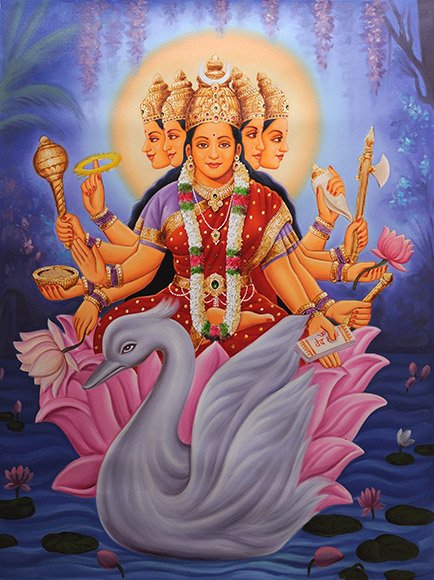
Chandas (छन्दस्) refers to Sanskrit prosody and represents one of the six Vedangas (auxiliary disciplines belonging to the study of the Vedas). The science of prosody (chandas-shastra) focusses on the study of the poetic meters such as the commonly known twenty-six metres mentioned by Pingalas.
Jyotisha (astronomy and astrology)
Source: Wisdom Library: Brihat Samhita by Varahamihira1) Tala (तल) refers to the “place (direction)” (i.e., of the sun), according to the Bṛhatsaṃhitā (chapter 4), an encyclopedic Sanskrit work written by Varāhamihira mainly focusing on the science of ancient Indian astronomy astronomy (Jyotiṣa).—Accordingly, “The moon after quitting the place (direction) of the sun [i.e., arka-tala] becomes illumined by the sun from below and she then also rises after the sun. Thus the lunar disc appears more and more illumined day by day by the sun according to her change of place, just in the same way as the western half of a pot becomes gradually illumined by the sun in the afternoon”.
2) Tala (तल) refers to the “vault” (the sky), according to the Bṛhatsaṃhitā (chapter 12).—Accordingly, “Hear now the effects of the heliacal rising of Canopus (Agastya), a star sacred to Agastya who suppressed the Vindhya mountains whose soaring heights obstructed the course of the Sun; [...] whose summits appeared to score the starry vault [i.e., gagana-tala]; whose rocks were full of buzzing bees scared by the violent pulling of flower trees by wild elephants and were also the abodes of hyenas, of bears, of tigers and of monkeys; [...]”.
3) Tāla (ताल) [=Tālahala?] refers to a country belonging to “Paścimottara (north-western division)” classified under the constellations of Uttarāṣāḍha, Śravaṇa and Dhaniṣṭhā, according to the system of Kūrmavibhāga, according to the Bṛhatsaṃhitā (chapter 14).—Accordingly, “The countries of the Earth beginning from the centre of Bhāratavarṣa and going round the east, south-east, south, etc., are divided into 9 divisions corresponding to the 27 lunar asterisms at the rate of 3 for each division and beginning from Kṛttikā. The constellations of Uttarāṣāḍha, Śravaṇa and Dhaniṣṭhā represent the north-western division consisting of [i.e., Tāla, Hala] [...]”.

Jyotisha (ज्योतिष, jyotiṣa or jyotish) refers to ‘astronomy’ or “Vedic astrology” and represents the fifth of the six Vedangas (additional sciences to be studied along with the Vedas). Jyotisha concerns itself with the study and prediction of the movements of celestial bodies, in order to calculate the auspicious time for rituals and ceremonies.
Pancaratra (worship of Nārāyaṇa)
Source: University of Vienna: Sudarśana's Worship at the Royal Court According to the AhirbudhnyasaṃhitāTala (तल) refers to the “surface (of the earth)”, according to the Ahirbudhnyasaṃhitā, belonging to the Pāñcarātra tradition which deals with theology, rituals, iconography, narrative mythology and others.—Accordingly, “Then he shall obtain land extending as far as the whole earth with [all of its] cities. Siddhas, Gandharvas and Dānavas will be subdued forever. On earth (avanī-tala—pālayatyavanītale) he will rule over the entire realm of the Three Worlds. [...]”.
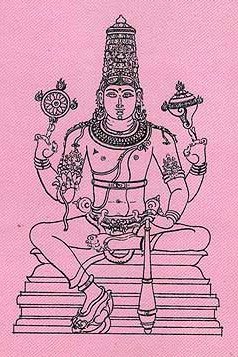
Pancaratra (पाञ्चरात्र, pāñcarātra) represents a tradition of Hinduism where Narayana is revered and worshipped. Closeley related to Vaishnavism, the Pancaratra literature includes various Agamas and tantras incorporating many Vaishnava philosophies.
Gitashastra (science of music)
Source: Shodhganga: Elements of Art and Architecture in the Trtiyakhanda of the Visnudharmottarapurana (gita)Tāla (ताल) refers to a musical instrument classified as Ghana (“those instruments which are made with some solid metals”) which represents one of the four kinds of Instrumental Music, produced by an instrument (ātodya), according to the Saṃgītaratnākara.—It can be said that as the word ghana denotes compactor solid, this kind of Music instruments are made with some solid metals. According to the Saṃgītaratnākara, the ghana kind of instruments [e.g., tāla] make sound when they strike together.
Gitashastra (गीतशास्त्र, gītaśāstra) refers to the ancient Indian science of Music (gita or samgita), which is traditionally divided in Vocal music, Instrumental music and Dance (under the jurisdiction of music). The different elements and technical terms are explained in a wide range of (often Sanskrit) literature.
Sports, Arts and Entertainment (wordly enjoyments)
Source: archive.org: Syainika Sastra of Rudradeva with English Translation (art)Tāla (ताल) refers to the “time” (of songs), according to the Śyainika-śāstra: a Sanskrit treatise dealing with the divisions and benefits of Hunting and Hawking, written by Rājā Rudradeva (or Candradeva) in possibly the 13th century.—Accordingly, “[...] It has been said that there are eighteen addictions. These are the outcome of the desire for earthly enjovments. [...] Vocal music consists of songs by charming voices sung with time and tune in harmony (tāla-svara-samanvita) accompanied by dances. Experts only appreciate it. Sung on proper occasions it leads to the attainment of the four objects of life. It is patent to all how it leads to the attainment of wealth and desires. [...]”.
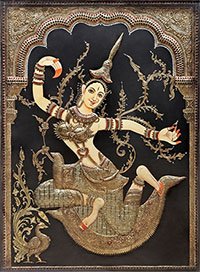
This section covers the skills and profiencies of the Kalas (“performing arts”) and Shastras (“sciences”) involving ancient Indian traditions of sports, games, arts, entertainment, love-making and other means of wordly enjoyments. Traditionally these topics were dealt with in Sanskrit treatises explaing the philosophy and the justification of enjoying the pleasures of the senses.
In Buddhism
Tibetan Buddhism (Vajrayana or tantric Buddhism)
Source: BDK Tripiṭaka: The Susiddhikara-sūtraTāla (ताल) refers to the “palmyra tree”, as mentioned in Chapter 12 (“offering food”) of the Susiddhikara-sūtra. Accordingly, “the fruit of the tāla (palmyra) tree, the fruit of the coconut, the fruit of the bilva, the fruit of the nimba (neem), and other malodorous fruits unpleasant to all should not be offered. [...] There are many more kinds of fruit such as the above varieties, but with different names: examine their taste and use them accordingly to make offerings”.
When you wish to offer food [viz., tāla], first cleanse the ground, sprinkle scented water all around, spread out on the ground leaves that have been washed clean, such as lotus leaves, palāśa (dhak) leaves, and leaves from lactescent trees, or new cotton cloth, and then set down the oblatory dishes. [...] First smear and sprinkle the ground and then spread the leaves; wash your hands clean, rinse out your mouth several times, swallow some water, and then you should set down the food [viz., tāla]. [...]

Tibetan Buddhism includes schools such as Nyingma, Kadampa, Kagyu and Gelug. Their primary canon of literature is divided in two broad categories: The Kangyur, which consists of Buddha’s words, and the Tengyur, which includes commentaries from various sources. Esotericism and tantra techniques (vajrayāna) are collected indepently.
Mahayana (major branch of Buddhism)
Source: academia.edu: A Study and Translation of the Gaganagañjaparipṛcchā1) Tāla (ताल) in Sanskrit (or Ta la in Tibetan) refers to “palm-trees”, according to the Gaganagañjaparipṛcchā: the eighth chapter of the Mahāsaṃnipāta (a collection of Mahāyāna Buddhist Sūtras).—Accordingly as The Lord said to Śāriputra asked: “When the Tathāgata taught the dharma to those Bodhisattvas on the lion’s throne (siṃhāsana), he was elevated into the vault of the sky as high as eighty koṭis of palm-trees (tāla), and so did the Bodhisattvas in the Mahāvhūya pavilion. When the Bodhisattvas rose into the vault of the sky, they listened to the Tathāgata’s preaching. Then the Tathāgata taught the dharma-seal named Gaganapariśuddhi. It is impossible, Śāriputra, to enumerate the enjoyment (paribhoga) of the Bodhisatvas in the pavilion of the Mahāvyūha for their entire lifespan. Do you see, Śāriputra, this lion’s throne?”.
2) Tala (तल) refers to the “palm (of the hand)”, according to the Gaganagañjaparipṛcchā.—Accordingly, as the Lord said to the Bodhisattva Ratnaśrī: “[...] That Kāyabandhana universe was, son of good family, thriving, prosperous, safe, well-provided, filled with a great multitude of men, adorned with seven precious jewels, peaceful and delightful, pleasant to touch like a soft cloth, displayed by the lotus of gold from the Jāmbū river, decorated with all kinds of luminous jewels, patterned like a chess-board, and even like the palm of the hand (sama-pāṇi-tala-jāta). Just like the enjoyment and entertainment of the Paranirmitavaśavartin gods, all the people in that universe, staying in celestial palace and pavilions, enjoyed food and drink as they wished”.

Mahayana (महायान, mahāyāna) is a major branch of Buddhism focusing on the path of a Bodhisattva (spiritual aspirants/ enlightened beings). Extant literature is vast and primarely composed in the Sanskrit language. There are many sūtras of which some of the earliest are the various Prajñāpāramitā sūtras.
In Jainism
General definition (in Jainism)
Source: archive.org: Economic Life In Ancient India (as depicted in Jain canonical literature)1) Tāla (ताल) refers to a kind of tree (vṛkṣa) commonly found in the forests (vaṇa) of ancient India, mentioned in the 1st century Uvavāiya-sutta (sanksrit: Aupapātika-sūtra). Forests have been a significant part of the Indian economy since ancient days. They have been considered essential for economic development in as much as, besides bestowing many geographical advantages, they provide basic materials for building, furniture and various industries. The most important forest products are wood and timber which have been used by the mankind to fulfil his various needs—domestic, agricultural and industrial.
Different kinds of trees (e.g., the Tāla tree) provided firewood and timber. The latter was used for furniture, building materials, enclosures, staircases, pillars, agricultural purposes, e. g. for making ploughs, transportation e. g. for making carts, chariots, boats, ships, and for various industrial needs. Vaṇa-kamma was an occupation dealing in wood and in various otherforest products. Iṅgāla-kamma was another occupation which was concerned with preparing charcoal from firewood.
2) Tāla (ताल) refers to the “palm”: a type of fruit (phala), according to Jain canonical texts (e.g., the Jñātādharmakathāṅga-sūtra from the 3rd century B.C.). Various kinds of fruits were grown and consumed by the people in ancient India. Fruits were also dried up for preservation. Koṭṭaka was a place for this operation. Besides being grown in orchards, fruits were gathered from jungles and were carried to cities for sales.
The Jain canonical texts frequently mention different horticulture products viz. fruits (e.g., Tāla fruit), vegetables and flowers which depict that horticulture was a popular pursuit of the people at that time. Gardens and parks (ārāma, ujjāṇa or nijjāṇa) were full of fruits and flowers of various kinds which besides yielding their products provided a calm and quiet place where people could enjoy the natural surroundings.
Source: archive.org: TrisastisalakapurusacaritraTāla (ताल) refers to “time-measure”, according to chapter 1.6 [ādīśvara-caritra] of Hemacandra’s 11th century Triṣaṣṭiśalākāpuruṣacaritra: an ancient Sanskrit epic poem narrating the history and legends of sixty-three illustrious persons in Jainism.—(cf. Saṅgītaratnākara 6. 9-10, Vol. II, p. 480, and Saṅgītamakaranda, Int. p. VII).
Accordingly, “[...] Sometimes, like Śakra, the King (i.e., Bharata) occupied the court of the amusement-hall to have a concert performed. The best flute-players blew the sweet-sounding flute, which has the first place in concert-work, like the oṅkāra among charms. The lute-players played the eleven kinds of lutes with vyañjana-dhātus, puṣpa, etc., distinct and pleasing to the ear. Likewise the stage-directors made tāla, the mother of dancing and gestures, beautiful with various changes, suitable for poetry [...]”.
Source: The University of Sydney: A study of the Twelve ReflectionsTala (तल) refers to the “bottom” (of the pit of hell), according to the 11th century Jñānārṇava, a treatise on Jain Yoga in roughly 2200 Sanskrit verses composed by Śubhacandra.—Accordingly, “Where is the escape from the bottom of the pit of hell (naraka-pātāla-tala) for the living soul who is continually afflicted by the enemy of infinite evil? If he emerges from that, the sentient being is born among the immobile beings or by some action reaches the state of mobile beings”.

Jainism is an Indian religion of Dharma whose doctrine revolves around harmlessness (ahimsa) towards every living being. The two major branches (Digambara and Svetambara) of Jainism stimulate self-control (or, shramana, ‘self-reliance’) and spiritual development through a path of peace for the soul to progess to the ultimate goal.
India history and geography
Source: archive.org: Glossary of Sinhalese Folk Terms appearing in the Service Tenure RegisterTala:—Sesamum.
Source: Cologne Digital Sanskrit Dictionaries: Indian Epigraphical GlossaryTala.—cf. sa-tala (IE 8-5); surface of the ground. Note: tala is defined in the “Indian epigraphical glossary” as it can be found on ancient inscriptions commonly written in Sanskrit, Prakrit or Dravidian languages.
--- OR ---
Tāla.—(IE 8-5), a palmyra palm; cf. sa-tālaka as an epithet of a gift village referring to the right of enjoying the trees by privileged tenants in some areas. Note: tāla is defined in the “Indian epigraphical glossary” as it can be found on ancient inscriptions commonly written in Sanskrit, Prakrit or Dravidian languages.
--- OR ---
Tāla.—(SII 2), Tamil; a dish. (EI 21; SITI), Tamil; the treasury Note: tāla is defined in the “Indian epigraphical glossary” as it can be found on ancient inscriptions commonly written in Sanskrit, Prakrit or Dravidian languages.

The history of India traces the identification of countries, villages, towns and other regions of India, as well as mythology, zoology, royal dynasties, rulers, tribes, local festivities and traditions and regional languages. Ancient India enjoyed religious freedom and encourages the path of Dharma, a concept common to Buddhism, Hinduism, and Jainism.
Biology (plants and animals)
Source: Wisdom Library: Local Names of Plants and DrugsTala [তাল] in the Bengali language is the name of a plant identified with Borassus flabellifer from the Arecaceae (Palm) family. For the possible medicinal usage of tala, you can check this page for potential sources and references, although be aware that any some or none of the side-effects may not be mentioned here, wether they be harmful or beneficial to health.
Source: Google Books: CRC World Dictionary (Regional names)1) Tala in India is the name of a plant defined with Borassus flabellifer in various botanical sources. This page contains potential references in Ayurveda, modern medicine, and other folk traditions or local practices It has the synonym Pholidocarpus tunicatus (Lour.) H. Wendl. (among others).
2) Tala is also identified with Cocos nucifera It has the synonym Cocos indica Royle (etc.).
3) Tala is also identified with Pandanus tectorius It has the synonym Pandanus hosinoi Kaneh. (etc.).
4) Tala in Nigeria is also identified with Sacoglottis gabonensis It has the synonym Aubrya occidentalis Chev., nom. nud. (etc.).
5) Tala in Philippines is also identified with Limnophila rugosa It has the synonym Herpestis rugosa Roth (etc.).
Example references for further research on medicinal uses or toxicity (see latin names for full list):
· Novae Plantarum Species (1821)
· Adansonia (1862)
· Botanische Jahrbücher für Systematik, Pflanzengeschichte und Pflanzengeographie (1923)
· Medical Science Research (1993)
· International Journal of Dermatology (2007)
· Pharmaceutical Biology (1998)
If you are looking for specific details regarding Tala, for example pregnancy safety, side effects, chemical composition, health benefits, diet and recipes, extract dosage, have a look at these references.

This sections includes definitions from the five kingdoms of living things: Animals, Plants, Fungi, Protists and Monera. It will include both the official binomial nomenclature (scientific names usually in Latin) as well as regional spellings and variants.
Languages of India and abroad
Pali-English dictionary
Source: BuddhaSasana: Concise Pali-English Dictionarytala : (nt.) a flat surface; level ground; a base; a flat roof; a stage; the blade of a weapon; the palm or sole. || tāla (m.) the palmyra tree. tāḷa (m.) a key; a cymbal; music (in general).
Source: Sutta: The Pali Text Society's Pali-English Dictionary1) Tāḷa, 2 (nt.) (Sk. tālaka=tāḍa AvŚ II. 56, tāḍaka Divy 577) a key (orig. a “knocker”?) Vin. II, 148 (3 kinds: loha°, kaṭṭha°, visāṇa°); Bdhd 1.
2) Tāḷa, 1 (taḍ, cp. Sk. tāla a blow, or musical time; tālīyaka cymbal) beating, striking, the thing beaten or struck, i.e. a musical instrument which is beaten, an Instr. of percussion, as a cymbal, gong, or tambourine (for tāḷa= gong cp. thāla): (a) gong, etc. J. I, 3; VI, 60; Th. 1, 893; DA. I, 85; DhsA. 319 (kaṃsa°).—(b) music in general DhA. IV, 67.
3) Tāla, (Sk. tāla, cp. Gr. ta_lis & thleqάw (be green, sprout up) Lat. talea shoot, sprout) 1. the palmyra tree (fan palm), Borassus flabelliformis; frequent in comparisons & similes M. I, 187; J. I, 202 (°vana), 273 (°matta as tall as a palm): VvA. 162; PvA. 100 (chinnamūlo viya tālo).—2. a strip, stripe, streak J. V, 372 (=raji).
4) Tala, (nt.) (Derivation uncertain. Cp. Sk. tala m. & nt.; cp. Gr. thli/Q (dice-board), Lat. tellus (earth), tabula (=table). Oir. talam (earth), Ags. pel (=deal), Ohg. dili=Ger. diele) (a) flat surface (w. ref. to either top or bottom: cp. Ger. boden), level, ground, base J. I, 60, 62 (pāsāda° flat roof); III, 60 (id.); paṭhavī° (level ground) J. II, 111, cp. bhūmi° PvA. 176; ādāsa° surface of a mirror Vism. 450, 456, 489; salila° (surface of pond) PvA. 157; VvA. 160; heṭṭhima° (the lowest level) J. I, 202; PvA. 281;— J. I, 233 (base); 266 (khagga° the flat of the sword); II, 102 (bheri°).—(b) the palm of the hand or the sole of the foot J. II, 223; Vism. 250; & cpds.—See also taṭa, tāla, tālu.

Pali is the language of the Tipiṭaka, which is the sacred canon of Theravāda Buddhism and contains much of the Buddha’s speech. Closeley related to Sanskrit, both languages are used interchangeably between religions.
Marathi-English dictionary
Source: DDSA: The Molesworth Marathi and English Dictionary1) Ṭāla (टाल).—a (In nandabhāṣā) Fifty.
2a) ṭāḷa (टाळ).—m (tāla S) A musical instrument of bellmetal (a sort of cymbal) played with a stick. 2 Beating time in music: also musical time or measure. 3 R (Commonly ṭahāḷa) Loppings. ṭāḷa vājaṇēṃ g. of s. To be consumed or spent--an article of provision or store. ṭāḷa vājaṇēṃ (ghōḍyācē) To be cat-hammed--a horse.
2b) ṭāḷa (टाळ).—a Epithet of that kind of pearl which is encircled around its centre by a furrow or line.
3) ṭāḷā (टाळा).—m (ṭāḷaṇēṃ) Putting off or procrastinating: also shuffling off; amusing with delusive promises. v dē. 2 Averting or preventing (of a trouble or an evil). 3 The roof of the mouth. 4 R (Usually ṭāhaḷā) A small leafy branch; a spray or sprig.
4) tala (तल).—n m (S) Bottom, the lowest part of, or the place underneath. 2 Ground, the ground-floor &c. 3 In comp. Extended surface; as caraṇatala or pādatala Sole of the foot; karatala or hastatala Palm of the hand; bhūtala or pṛthvītala Face of the earth. 4 Superficies, surface, bounding expanse.
5) taḷa (तळ).—m (tala S) Bottom, the lowest part of, or the place underneath. 2 Ground; the groundfloor &c.; the space under: (as under a tree, a couch, a roof.) 3 A place of encampment or a camp. v ghāla, dē, māṇḍa, dhara, paḍa, yē, sōḍa. 4 The spot which a body occupies:--viewed with reference to removal from it. Ex. āmbē sagaḷēca nēūṃ nakō kāṃhīṃ taḷāvara ṭhēva Leave a few behind. 5 A tract of ground; a plain or extended tract. Ex. tyā taḷācī pradakṣiṇā cāra kōsāñcī āhē. 6 The sole, or one of the layers composing it, of a shoe. 7 n The central board in a Potter's wheel. taḷa karaṇēṃ To encamp, alight, take up ground. taḷa ghālūna basaṇēṃ To sit down or stop at any place with all demonstrations of fixedness or permanency. 2 also taḷa māraṇēṃ q. v. To appropriate &c. taḷa jhāḍaṇēṃ g. of o. To sweep the thrashing-floor. Hence To consume or clear utterly. taḷa thāmbaṇēṃ g. of s. To get comfortably settled and fixed; and, with neg. con., to be a great gadabout or rover. taḷa māraṇēṃ To appropriate fraudulently (a deposit &c.) and, without attempt to flee or abscond, remain in bold and sturdy disallowal. taḷa lāgaṇēṃ or paḍaṇēṃ acc. of s. To be nearly exhausted or spent. taḷāvara basaṇēṃ or rāhaṇēṃ To be lying in utter destitution and wretchedness. 2 To stay at home, i. e. to get nothing. (From the figure of robbers who, when the band returns from a plundering expedition, consider him who has remained behind as without title to share.) See i. Sam. XXX. 22. Also taḷāvara basaviṇēṃ To pass by, giving nothing. To the above phrases add taḷacēṃ maḍakēṃ hāṇaṇēṃ or phōḍaṇēṃ (To strike or break the bottom-pitcher of a pile.) To strike a blow at the root. taḷacī āga mastakāsa jāṇēṃ-caḍhaṇēṃ (To be affected in the head from the burning of the feet.) To be all over in a passion.
6a) tāla (ताल).—n ( H A tank.) Used in Maraṭhi figuratively. A lake or pool (i. e. a great quantity spilled or shed) of milk, of blood &c.
6b) tāla (ताल).—m S Beating time in music: also musical time or measure. v dhara. Some of the Musical measures are aḍatāla, aḍhācautāla, āditāla, ēkā, cautāla, jhampā, tivaḍā, trivaṭa, bilandī, brahmatāla, rudratāla, rūpaka, lakṣmītāla, suraphāka. 2 Slapping or clapping the hands together or against the arms. 3 A musical instrument of bell-metal or brass played with a stick, a sort of cymbal. 4 A story of a house. 5 The Palmyra or Fan palm. 6 A certain medicinal preparation. tāla tōḍaṇēṃ To bluster, boast, swagger, swell.
6c) tāla (ताल).—f A mound or bank raised (in a field, across a road &c.) to preserve or turn off water. 2 A built-up bank of a river.
7) tālā (ताला).—m (tālaka S) A lock or padlock.
8) tāḷa (ताळ).—m See tāla m in the first four senses. 5 Tallying or agreeing (as of accounts or statements): congruity, correspondence, connectedness (of speech, conduct, action). 6 Freely. Consistency, coherence, power of lasting or holding together (as of substances, articles, the body). v asa, dhara, ṭāka, sōḍa. sātavyā tāḷīṃ basaṇēṃ To sit in the very Attics.
9) tāḷā (ताळा).—m (tāḷa or tāla) Agreement, correspondence, harmonious relation (as of accounts, of different statements or stories, of measures &c.) v ghē, pāha, paḍa, miḷa: also correspondence (of the event with the prediction, of a testimony with personal experience &c.) v miḷa. tāḷā pāhaṇēṃ or ghēṇēṃ with hyācā, tyācā To compare together. tāḷyāsa or tāḷyāvara yēṇēṃ To come round or to; to consent to and come under (some rules, laws, restraint).
Source: DDSA: The Aryabhusan school dictionary, Marathi-English1) Ṭāḷa (टाऌअ).—m A musical instrument of bell- metal (a sort of cymbal) played with a stick.
2) ṭāḷā (टाळा).—m Putting off or procrastinating: also shuffling off; amusing with de- lusive promises. The roof of the mouth. A spray or sprig.
3) tala (तल).—n m Bottom. Ground. Surface. karatala Palm of the hand. karatala, pādatala Sole of the foot. bhūtala face of the earth.
4) taḷa (तळ).—m Bottom. Ground. A camp. The sole of a shoe. taḷa karaṇēṃ Encamp, alight. taḷacī āga mastakāsa jāṇēṃ Be all over in passion. taḷa lāgaṇēṃ To be exhausted.
5a) tāla (ताल).—f An embankment.
5b) tāla (ताल).—m Beating time in music. A sort of cymbal. A storey of a house.
6) tālā (ताला).—m A lock or padlock.
7) tāḷa (ताळ).—m Tallying; congruity. Consist- ency. See tāla. tāḷa sōḍaṇēṃ To go out of control.
8) tāḷā (ताळा).—m Agreement, correspondence.tāḷā pāhaṇēṃ-ghēṇēṃ Compare together. tāḷyāvara yēṇēṃ Consent to and come under (some rules), to come-round.
Marathi is an Indo-European language having over 70 million native speakers people in (predominantly) Maharashtra India. Marathi, like many other Indo-Aryan languages, evolved from early forms of Prakrit, which itself is a subset of Sanskrit, one of the most ancient languages of the world.
Sanskrit dictionary
Source: DDSA: The practical Sanskrit-English dictionaryṬala (टल) or Ṭāla (टाल).—Confusion, perturbation.
Derivable forms: ṭalaḥ (टलः), ṭālaḥ (टालः).
See also (synonyms): ṭalana.
--- OR ---
Tala (तल).—[tal-ac]
1) A surface; भुवस्तलमिव व्योम कुर्वन् व्योमेव भूतलम् (bhuvastalamiva vyoma kurvan vyomeva bhūtalam) R.4.29; sometimes used at the end of comp. without much alteration of meaning; महीतलम् (mahītalam) 'surface of the earth' i. e. earth itself; शुद्धे तु दर्पणतले सुलभावकाशा (śuddhe tu darpaṇatale sulabhāvakāśā) Ś.7.32; नभस्तलम् (nabhastalam) &c.
2) The palm of the hand; R.6.18.
3) The sole of the foot; Bhāgavata 1.36. 8.
4) The fore-arm.
5) A slap with the hand.
6) Lowness, inferiority of position.
7) A lower part, part underneath, base, foot, bottom; रेवारोधसि वेतसीतरुतले चेतः समुत्कण्ठते (revārodhasi vetasītarutale cetaḥ samutkaṇṭhate) K. P.1.
8) (Hence) The ground under a tree or any other object, shelter afforded by anything; फणी मयूरस्य तले निषीदति (phaṇī mayūrasya tale niṣīdati) Ṛtusaṃhāra 1.13.
9) A hole, pit.
1) A span.
-laḥ 1 The hilt of a sword.
2) The palmyra tree.
3) Name of Śiva.
4) Pressing the strings of a lute with the left hand; तत्र तत्र महानादैरुत्कृष्टतलनादितैः (tatra tatra mahānādairutkṛṣṭatalanāditaiḥ) Mahābhārata (Bombay) 1.221.6.
5) A division of hell.
-lam 1 A pond.
2) A forest, wood; भस्मप्रस्तरशायी च भूमिशय्या तलेषु च (bhasmaprastaraśāyī ca bhūmiśayyā taleṣu ca) Mahābhārata (Bombay) 12.33.11.
3) Cause, origin, motive.
4) A leathern fence worn round the left arm (talā also in this sense); उद्यतैरायुधैश्चित्रास्तलबद्धाः कलापिनः (udyatairāyudhaiścitrāstalabaddhāḥ kalāpinaḥ) Mahābhārata (Bombay) 6.16.14.
Derivable forms: talaḥ (तलः), talam (तलम्).
--- OR ---
Tāla (ताल).—[tal eva aṇ]
1) The palmyra tree, Bhāg. 8.2.12; विधिवशात्तालस्य मूलं गतः (vidhivaśāttālasya mūlaṃ gataḥ) Bhartṛhari 2.9; R.15.23.
2) A banner formed of the palm.
3) Slapping or clapping the hands together, the noise made by it; तलतालांश्च वादयन् (talatālāṃśca vādayan) Mahābhārata (Bombay) 3.178.17; Mālatīmādhava (Bombay) 5.23.
4) Flapping in general; विस्तारितः कुञ्जरकर्णतालैः (vistāritaḥ kuñjarakarṇatālaiḥ) R.7.39.
5) Flapping of the ears of an elephant.
6) Beating time (in music); करकिसलयतालैर्मुग्धया नर्त्यमानम् (karakisalayatālairmugdhayā nartyamānam) Uttararāmacarita 3.1; Meghadūta 81.
7) A musical instrument made of bell-metal, Bhāg. 8.15.21; उषसि स गजयूथकर्णतालैः पटुपटहध्वनिभिर्विनीतनिद्रः (uṣasi sa gajayūthakarṇatālaiḥ paṭupaṭahadhvanibhirvinītanidraḥ) R.9.71.
8) The palm of the hand.
9) A lock, bolt.
1) The hilt of a sword.
11) An epithet of Śiva.
12) (In prosody) A trochee.
13) A particular measure of height; Rām.6.
14) A short span; a span measured by the thumb and the middle finger.
15) A dance; S. D.6.
-lam 1 The nut of the palmyra tree.
2) Yellow orpiment.
Derivable forms: tālaḥ (तालः).
Source: Cologne Digital Sanskrit Dictionaries: Edgerton Buddhist Hybrid Sanskrit DictionaryTala (तल).—m. or nt. (= AMg. id. = Sanskrit bhūtala), surface of the ground: yehi iha kīṭakamardanāni vā kārāpitāni bhavanti talamardanāni vā…Mahāvastu i.21.12; tala-m° according to Senart stamping on the ground; but perhaps breaking up the surface of the ground, as in digging; reprobated as injurious to living creatures.
--- OR ---
Tāla (ताल).—nt. (in Sanskrit only m., and so [Buddhist Hybrid Sanskrit] usually), palm-tree: (sarvasmāc ca tālād ratnasūtrād, so read with Calcutta (see LV.) for Lefm. °trā) dvitīye tālam avasaktam abhūt Lalitavistara 273.22 (prose), and from a jewel-thread (extending) from each palm-tree, (each) palm-tree was attached to the next. As a measure of length or especially height, tāla, palm-tree, occurs also in Sanskrit ([Boehtlingk and Roth]), and much oftener in [Buddhist Hybrid Sanskrit], where previous translators often erroneously render span, especially in the [compound] sapta-tāla; but this (= Pali satta-tāla) means, as in Pali, seven palm-trees, and so tāla regularly (con- firmed by Tibetan, regularly śiṅ ta la, tāla-tree). Acc. to Mahāvastu ii.313.3 ff. a tāla is one-eighth of a krośa, and eight times a pauruṣeya 3, q.v. In Lalitavistara 14.11 the cakra-ratna of the cakravartin is saptatālam uccaiḥ; in Lalitavistara 154.5 a metal figure of a boar (ayasmayī varāhapratimā) measures 7 tālas (read saptatālā as one word); in Lalitavistara 273.19 a vedikā is saptatālān uccaistvena; in Avadāna-śataka ii.104.4, 14 a throne is saptatālodgataṃ; in Saddharmapuṇḍarīka 428.10 kūṭāgāram abhiruhya vaihāyase saptatālamātreṇa, having mounted a tower-house seven tālas high in the air. Most commonly used as a measure of height to which someone, especially Buddha, magi- cally rises in the air; one tāla only, tālamātraṃ (vaihā- yasam…) Mahāvastu i.239.18; iii.107.12, 13; 108.5; 411.13, 15; oftener sapta-tāla-mātraṃ vaihāyasam abhyudgamya, or variations on this, Saddharmapuṇḍarīka 459.11; 465.7; Lalitavistara 18.16 (here a Pratyekabuddha, rising 7 tālas, passes thru the ‘fire- element’, tejodhātu, and disappears); 350.20—21; Laṅkāvatāra-sūtra 16.6; Divyāvadāna 252.16.
Source: Cologne Digital Sanskrit Dictionaries: Shabda-Sagara Sanskrit-English DictionaryTala (तल).—n.
(-laṃ) 1. Essential nature, (in composition especially, as mahītalaṃ the earth itself, the very earth.) 2. Depth, bottom, lowness, inferiority of position, the place under or underneath. 3. A wood, a forest. 4. A hole, a pit, a chasm. 5. Cause, origin, motive, the root or seed of events. 6. Sole of the foot. 7. A slap with the hand. nf.
(-laṃ-lā) A leathern fence worn by archers on the left arm. m.
(-laḥ) 1. The palmyra tree. 2. The palm with extended fingers. 3. The hilt or handle of a sword, &c. 4. Pressing the strings of a lute with the left hand. 5. The stand or support of any thing, that which is under or below it. 6. The fore arm. 7. A span. E. tal to fix, affix ac.
--- OR ---
Tāla (ताल).—mfn.
(-laḥ-lī-laṃ) Made of the palm wood. m.
(-laḥ) 1. Beating time in music, musical time or measure. 2. A short span, one measured by the thumb and middle finger. 3. Slapping or clapping the hands together, or against the arms, &c. 4. The open hand with the fingers extended, the palm. 5. A musical instrument of bell metal or brass, (a sort of cymbal,) played with a stick. 6. The hilt of a sword or sacrificial knife, &c. 7. The palmyra tree or fan palm, (Borassus flabelliformis.) 8. A lock, a bolt. 9. In prosody, a trochee. n.
(-laṃ) 1. The throne of Durga. 2. Yellow orpiment: see haritāla. 3. The fruit of the palm tree. f. (-lī) 1. A sort of key or pin. 2. A species of the mountain palm, (Corypha taliera, Rox.) 3. A plant, (Flacourtia cataphraeta:) see jhaṭā and amalā. 4. A fragrant earth: see tuvarikā. 5. A plant, (Curculigo orchioides.) 6. The spirituous juice of the palm, the common Tady. E. tal to fix or tan to spread, affix ghañ; or in the causal form, with ac affix fem. affix ṅīṣ, na changed to la; otherwise, taḍ to beat, to overcome, (disease, &c.) ac and ṅīṣ affixes, and ḍa changed to la; the adjective is derived from the substantive by adding aṇ.
Source: Cologne Digital Sanskrit Dictionaries: Benfey Sanskrit-English DictionaryTala (तल).—m. and n. 1. Surface, Mahābhārata 3, 2412. 2. Bottom, [Rāmāyaṇa] 5, 13, 11. 3. Without a special signification, as latter part of many comp. words, e. g. nabhas-tala = nabhas, Heaven, [Bhāgavata-Purāṇa, (ed. Burnouf.)] 2, 1, 27. 4. The palm, [Arjunasamāgama] 3, 40; often compounded with a word denoting hand, e. g. pāṇi-tala, Mahābhārata 13, 5013. 5. Sole of the foot, [Rāmāyaṇa] 5, 13, 47; usually compounded with a word signifying foot, e. g. pāda-tala, Mahābhārata 13, 7444. 6. That which is under or below anything, under, [Hitopadeśa] 43, 21; [Mṛcchakaṭikā, (ed. Stenzler.)] 34, 11; [Mānavadharmaśāstra] 2, 59 (aṅguṣṭhamūlasya tale, Under the root of the thumb). 7. (also f. lā), A leathern fence worn by archers on the left arm, Mahābhārata 6, 621 (talabaddha = baddhatala, Having put on a leathern fence, etc., cf. talatra), [Rāmāyaṇa] 2, 87, 23.
--- OR ---
Tāla (ताल).—I. m. 1. The palmyra tree, or fan palm, Borassus flabelliformis, [Rāmāyaṇa] 1, 1, 64; used as banner, Mahābhārata 6, 1811. 2. Slapping or clapping the hands together, [Meghadūta, (ed. Gildemeister.)] 77; often compounded with a word denoting hand, Mahābhārata 13, 1397. 3. Slapping together in general, [Raghuvaṃśa, (ed. Stenzler.)] 9, 71. 4. Musical measure, [Pañcatantra] v. [distich] 43; Mahābhārata 13, 995. 5. A sort of cymbal, [Pañcatantra] 20, 8. Ii. n. The fruit of the palmyra tree, [Harivaṃśa, (ed. Calc.)] 3711. Iii. f. li, The name of a tree. Corypha taliera Roxb., [Rāmāyaṇa] 4, 43, 6.
Source: Cologne Digital Sanskrit Dictionaries: Cappeller Sanskrit-English DictionaryṬāla (टाल).—[adjective] tender (of fruits).
--- OR ---
Tala (तल).—[masculine] [neuter] place on or under ([genetive] or —°), surface, bottom, plain; often corresp. to a more special word, as pāṇitala palm of the hand, nabhastala vault of the sky, often otiose. [neuter] arm-leather (cf. aṅgulitra).
--- OR ---
Tāla (ताल).—[masculine] the fan-palm (often mentioned as a banner or a measure of height); clapping of the hands, flapping ([especially] of the ears of an elephant); beating time, musical time or measure, dance; [Epithet] of Śiva, [plural] [Name] of a people. [feminine] ī a cert. tree, palm-wine, clapping of the hands. [neuter] the nut of the fan-palm.
Source: Cologne Digital Sanskrit Dictionaries: Monier-Williams Sanskrit-English Dictionary1) Ṭala (टल):—[from ṭal] = ṭāla [gana] jvalādi.
2) Ṭāla (टाल):—mfn. (= ṭala [gana] jvalādi) tender (a fruit), [Śīlāṅka]on, [Ācāranirṇaya ii.]
3) Tala (तल):—(m., [cf. Lexicographers, esp. such as amarasiṃha, halāyudha, hemacandra, etc.]) n. (√stṛ) surface, level, flat roof (of a house), [Mahābhārata] etc. (chiefly ifc. [f(ā). , [Rāmāyaṇa v, 13]] cf. nabhas-, mahīetc.)
4) the part underneath, lower part, base, bottom, [Manu-smṛti ii, 59; Varāha-mihira’s Bṛhat-saṃhitā; Pañcatantra] etc. (cf. adhas-, taruetc.)
5) mn. the palm (of the hand See kara-, pāṇi-), [Rāmāyaṇa ii, 104, 17; Śakuntalā; Raghuvaṃśa vi, 18]
6) the sole (of the foot, aṅghri-, pāda-), [Mahābhārata i; Varāha-mihira’s Bṛhat-saṃhitā]
7) (without karaetc.) the palm of the hand (anyo nyasya, or parasparaṃ talaṃ or lān-√dā, to slap each other with the palms of the hands), [Mahābhārata; Harivaṃśa; Rāmāyaṇa; Suśruta]
8) m. n., [cf. Lexicographers, esp. such as amarasiṃha, halāyudha, hemacandra, etc.] the sole of the foot, [Rāmāyaṇa v, 13, 47]
9) m. the fore-arm, [cf. Lexicographers, esp. such as amarasiṃha, halāyudha, hemacandra, etc.]
10) = tāla (a span, [cf. Lexicographers, esp. such as amarasiṃha, halāyudha, hemacandra, etc.]; the handle of a sword, [cf. Lexicographers, esp. such as amarasiṃha, halāyudha, hemacandra, etc.]; the palmyra tree, [Viddhaśālabhañjikā ii, 13])
11) pressing the strings of a lute with the left hand, [Mahābhārata viii]
12) Name of a hell, [Āruṇeya-upaniṣad; Śiva-purāṇa] (cf. talātala)
13) Śiva, [Mahābhārata xiii, 17, 130]
14) Name of a teacher [gana] śaunakādi
15) n. = -hṛdaya, [cf. Lexicographers, esp. such as amarasiṃha, halāyudha, hemacandra, etc.]
16) = talka, [cf. Lexicographers, esp. such as amarasiṃha, halāyudha, hemacandra, etc.]
17) = talaka (q.v.), [cf. Lexicographers, esp. such as amarasiṃha, halāyudha, hemacandra, etc.]
18) = talla (q.v.), [cf. Lexicographers, esp. such as amarasiṃha, halāyudha, hemacandra, etc.]
19) the root or seed of events, [cf. Lexicographers, esp. such as amarasiṃha, halāyudha, hemacandra, etc.]
20) = -tra, [Āśvalāyana-gṛhya-sūtra iii, 12, 11] (tala), [Mahābhārata; Rāmāyaṇa]
21) Talā (तला):—[from tala] f. idem, [cf. Lexicographers, esp. such as amarasiṃha, halāyudha, hemacandra, etc.]
22) [v.s. ...] Name of a daughter of Raudrāśva, [Vāyu-purāṇa ii, 37, 122]
23) [v.s. ...] cf. a-, jihvā-, ni-, nis-, pra-, mahā-, rasā-, vi-, su-.
24) Tāla (ताल):—m. ([Siddhānta-kaumudī napuṃs. 25 [Scholiast or Commentator]]) the palmyra tree or fan-palm (Borassus flabelliformis, producing a sort of spirituous liquor; considered as a measure of height, [Rāmāyaṇa iv; vi, 2, 6; Lalita-vistara iii, xxii]; forming a banner, [Mahābhārata iv, vi, xvi; Harivaṃśa]; to pierce seven fan-palms with one shot is held to be a great feat, [Rāmāyaṇa i, 1, 64; Agni-purāṇa viii, 2]), [Manu-smṛti viii, 246; Mahābhārata] etc.
25) ([from] tāḍa) slapping the hands together or against one’s arm, [xiii, 1397; Rāmāyaṇa] etc.
26) the flapping of an elephant’s ears, [Raghuvaṃśa ix, 71; Kathāsaritsāgara xii; xxi, 1; Prabodha-candrodaya i, v]
27) musical time or measure, [Mahābhārata] etc. (cf. -jña & -śīla)
28) a dance, [Sāhitya-darpaṇa vi, 277]
29) a cymbal, [Pañcatantra; Bhāgavata-purāṇa viii, 15, 21]
30) (in prosody) a trochee
31) a span measured by the thumb and middle finger, [Hemādri’s Caturvarga-cintāmaṇi i, 3, 855 and 6, 171]
32) (= tala) the palm (of the hand), [cf. Lexicographers, esp. such as amarasiṃha, halāyudha, hemacandra, etc.]
33) a lock, bolt, [Horace H. Wilson]
34) (= tala) the hilt of a sword, [cf. Lexicographers, esp. such as amarasiṃha, halāyudha, hemacandra, etc.]
35) a goldsmith, [Demetrius Galanos’s Lexiko: sanskritikes, anglikes, hellenikes]
36) Śiva, [Mahābhārata xiii, 1243]
37) [plural] Name of a people (cf. -vana and apara-), [Varāha-mihira’s Bṛhat-saṃhitā xiv, 22]
38) mn. orpiment, [cf. Lexicographers, esp. such as amarasiṃha, halāyudha, hemacandra, etc.]
39) Name of a hell, [Viṣṇu-purāṇa ii, 6, 2 and 10; Śiva-purāṇa]
40) n. the nut of the fan-palm, [Mahābhārata iii, 8718; Harivaṃśa 3711] (cf. kākatālīya)
41) the throne of Durgā (cf. manas-), [cf. Lexicographers, esp. such as amarasiṃha, halāyudha, hemacandra, etc.] ([varia lectio])
42) mf(ī, [Pāṇini 4-3, 152])n. made of palmyra wood, [Manu-smṛti xi, 96/97]
43) Tālā (ताला):—[from tāla] f. ([gana] kuṇḍādi) See māsa-
44) Tāla (ताल):—cf. ucca-, ut-, eka-, kara-, kāṃsya-, kāma-, krośa-.
Source: Cologne Digital Sanskrit Dictionaries: Yates Sanskrit-English Dictionary1) Tala (तल):—(laṃ) 1. n. Essential nature; bottom; a wood; a hole; a cause; sole of the foot; slap of the hand. m. (laḥ) Palmyra tree; palm with extended fingers; a hilt; a stand; forearm; a span. (lā-laṃ) f. n. The leathern fence of the arm used by archers.
2) Tāla (ताल):—(laḥ) 1. m. Beating time in music; a short span; clapping hands; the palm; sort of cymbal; a hilt; a palmyra tree; a lock; a trochee. f. A sort of key or pin; a plant; a fragrant earth. n. Durgā's throne; yellow orpiment. a. Made of palm wood.
Source: DDSA: Paia-sadda-mahannavo; a comprehensive Prakrit Hindi dictionary (S)Tala (तल) in the Sanskrit language is related to the Prakrit words: Tala, Tāḍa, Tāla.
[Sanskrit to German]
Sanskrit, also spelled संस्कृतम् (saṃskṛtam), is an ancient language of India commonly seen as the grandmother of the Indo-European language family (even English!). Closely allied with Prakrit and Pali, Sanskrit is more exhaustive in both grammar and terms and has the most extensive collection of literature in the world, greatly surpassing its sister-languages Greek and Latin.
Hindi dictionary
Source: DDSA: A practical Hindi-English dictionary1) Ṭāla (टाल) [Also spelled taal]:—(nf) a stock, heap; a (fuel) shop; prevarication; postponement, deferment; evasion, avoidance; ~[maṭola] prevarication, puting off (on some pretext); avoidance, evasion; •[karanā] to drag one’s feet; to gain time.
2) Tala (तल) [Also spelled tal]:—(nm) the bottom; under part; surface, floor; ~[sparśī] going deep, profound.
3) Talā (तला):—(nm) the bottom; sole (of a shoe); base; floor; keel (of a boat); lower/under side.
4) Tāla (ताल) [Also spelled taal]:—(nm) a pond, pool, tank; a musical measure; rhythm, rhythmic cycle; see [tāḍa]; slapping with the palm the inner side of the thigh as a gesture of challenge or defiance; ~[tā] rhythmicity; —[patra] palm leaf; palmyra leaf; ~[baddha] rhythmic(al); •[tā] rhythmicity; -[betāla] inharmonious; discordant, out of tune; ~[makhānā] the seed of Solanum Indicum; ~[vana] a palmyra forest; ~[vṛṃta] palm-leaf; —[ṭhokanā] to slap the inner side of the thigh as a gesture of defiance or challenge (in wrestling); —[denā] to chime, to correspond to a musical note with snapping, clapping or footwork; —[para nācanā], ([kisī kī]) to dance to the tune of; —[se betāla honā] to slip out of tune, to strike a discordant note.
5) Tālā (ताला):—(nm) a lock; ~[baṃdī] a lockout; —[jaḍanā/ṭhokanā/māranā] to lock.
...
Prakrit-English dictionary
Source: DDSA: Paia-sadda-mahannavo; a comprehensive Prakrit Hindi dictionary1) Tala (तल) in the Prakrit language is related to the Sanskrit word: Tal.
2) Tala (तल) also relates to the Sanskrit word: Tala.
3) Tala (तल) also relates to the Sanskrit word: Tala.
4) Tāla (ताल) also relates to the Sanskrit word: Tāla.
5) Tāla (ताल) also relates to the Sanskrit word: Tāla.
6) Tālā (ताला) also relates to the Sanskrit word: Tadā.
Prakrit is an ancient language closely associated with both Pali and Sanskrit. Jain literature is often composed in this language or sub-dialects, such as the Agamas and their commentaries which are written in Ardhamagadhi and Maharashtri Prakrit. The earliest extant texts can be dated to as early as the 4th century BCE although core portions might be older.
Kannada-English dictionary
Source: Alar: Kannada-English corpusTala (ತಲ):—
1) [noun] an extent of level land; plain.
2) [noun] the inner surface of the hand between the fingers and wrist; the palm of the land.
3) [noun] the bottom surface of the foot; the sole.
4) [noun] the lowest part (of anything).
5) [noun] the lowest or last place or position.
6) [noun] the quality or condition of being deep; deepness.
7) [noun] profundity of thought.
8) [noun] a piece of land the surface of which is depressed below the surrounding surface; a hollow; depression.
9) [noun] (gen.) a piece of land; ground.
10) [noun] the palmyra tree Borassus flabellifer (= B. flabelliformis) of Arecaceae family; palmyra palm.
11) [noun] a leather guard for the hands used by archers.
12) [noun] the essential character or quality that makes something what it is; essence.
13) [noun] the handle of a sword or dagger.
14) [noun] the part of the arm between the elbow and the wrist; the forearm.
15) [noun] the pressing of the strings of a vīṇe, the Indian lute, while playing on.
16) [noun] an extensive track of land covered by natural and thick growth of trees, under-bushes, etc.; a forest.
17) [noun] (myth.) one of the seven regions below the earth.
18) [noun] that part of the agricultural produce which the tenant has to give to the landlord as lease-rent.
19) [noun] the distance between the tips of the thumb and the little finger, when stretched apart (used as an approx. unit of linear measurement).
20) [noun] the part of the body on which one rests while sitting vertically straight.
21) [noun] (gen.) a place, locality or region.
22) [noun] one’s naive town, village.
23) [noun] (fig.) skill in using one’s hand; dexterity.
24) [noun] all that part of a building on the same floor; a storey.
--- OR ---
Talā (ತಲಾ):—
1) [adverb] for each; for every (one); per (person).
2) [adverb] each one; every one (individually).
--- OR ---
Taḷa (ತಳ):—
1) [noun] an extent of level land; plain.
2) [noun] the inner surface of the hand between the fingers and wrist; the palm of the land.
3) [noun] the bottom surface of the foot; the sole.
4) [noun] the lowest part (of anything).
5) [noun] the lowest or last place or position.
6) [noun] the quality or condition of being deep; deepness.
7) [noun] profundity of thought.
8) [noun] a piece of land the surface of which is depressed below the surface of land surrounding it; a hollow; depression.
9) [noun] (gen.) a piece of land; ground.
10) [noun] the palmyra tree Borassus flabellifer (= B. flabelliformis) of Arecaceae family; palmyra palm.
11) [noun] a leather guard for the hands used by archers.
12) [noun] the essential character or quality that makes something what it is; essence.
13) [noun] the handle of a sword or dagger.
14) [noun] the part of the arm between the elbow and the wrist; the forearm.
15) [noun] the pressing of the strings of a v īṇe, the Indian lute, while playing on.
16) [noun] an extensive track of land covered by natural and thick growth of trees, under-bushes, etc.; a forest.
17) [noun] (myth.) one of the seven regions below the earth.
18) [noun] that part of the agricultural produce which a tenant has to give to the landlord as lease-rent.
19) [noun] the distance between the tips of the thumb and the little finger, when stretched apart (used as an approx. unit of linear measurement).
20) [noun] the part of the body on which one rests while sitting vertically straight.
21) [noun] (gen.) a place, locality or region.
22) [noun] one’s native town, village.
23) [noun] (fig.) skill in using one’s hand; dexterity.
24) [noun] all that part of a building on the same floor; a storey.
--- OR ---
Tāla (ತಾಲ):—
1) [noun] the inner surface of the hand; the palm.
2) [noun] the distance between the tips of the thumb and forefinger when stretched apart (used as a unit of linear measure).
3) [noun] the act of striking the hands together, as in applauding; clapping.
4) [noun] a fastening device that has a movable lever, attached to the doorjamb.
5) [noun] an oxide of sulphur.
6) [noun] the palm tree Borassum flabellifer (= B. flabelliformis) of Arecaceae family.
7) [noun] a pair of small, round, slightly hollowed bronze or brass plates used to maintain time in music by striking together.
8) [noun] a measure of regular pace in music.
9) [noun] (pros.) a kind of metre.
10) [noun] an old unit of time.
--- OR ---
Tāḷa (ತಾಳ):—[noun] = ತಾಳು [talu]2.
--- OR ---
Tāḷa (ತಾಳ):—
1) [noun] the inner surface of the hand; the palm.
2) [noun] the distance between the tips of the thumb and forefinger when stretched apart (used as a unit of linear measure).
3) [noun] the act of striking the hands together, as in applauding; clapping.
4) [noun] a fastening device that has a movable lever, attached to the doorjamb.
5) [noun] an oxide of sulphur.
6) [noun] the palm tree Borassum flabellifer (= B. flabelliformis) of Arecaceae family.
7) [noun] a pair of small, round, slightly hollowed bronze or brass plates used to maintain time in music by striking together.
8) [noun] a measure of regular pace in music.
9) [noun] (pros.) a kind of metre.
10) [noun] an old unit of time.
--- OR ---
Tāḷa (ತಾಳ):—[noun] a share-like part of a weeding implement.
Kannada is a Dravidian language (as opposed to the Indo-European language family) mainly spoken in the southwestern region of India.
Tamil dictionary
Source: DDSA: University of Madras: Tamil LexiconTaḷā (தளா) noun See தளவு². [thalavu².] யாமரக் கிளவியும் பிடாவுந் தளாவும் [yamarag kilaviyum pidavun thalavum] (தொல். எழுத். [thol. ezhuth.] 229).
--- OR ---
Tāḻa (தாழ) adverb < தாழ்¹-. [thazh¹-.] Downward, below; கீழே. [kizhe.]
--- OR ---
Tāḷā (தாளா) noun < Urdu dāḷā. Comparison; ஒப்பு. [oppu.] (C. G.)
--- OR ---
Tāḷā (தாளா) noun Paddle for catamaran; கட்டுமரத்தைச் செலுத்த நீரைத்துழாவும் பலகை. [kattumarathais selutha niraithuzhavum palagai.] Local usage
Tamil is an ancient language of India from the Dravidian family spoken by roughly 250 million people mainly in southern India and Sri Lanka.
See also (Relevant definitions)
Starts with (+944): Taala-saancho, Tala neli, Tala nili, Tala palm, Tala Tree, Tala-atu-muttuwa, Tala-bhedya, Tala-bhoga, Tala-Kana-Kara-Dishi, Tala-Kana-Kara-Dishim, Tala-kushe, Tala-kuttukampi, Tala-na-sura, Tala-na-sura, Tala-pada, Tala-parnu, Tala-parrukaran, Tala-picaniyayam, Tala-samco, Tala-samutiram.
Ends with (+795): Abbaratala, Abbhapatala, Abhijnanashakuntala, Abhrapatala, Abhratala, Adankhatala, Adasatala, Adatala, Adavi motala, Adha Cautala, Adhahpatala, Adhamadashatala, Adhastala, Adisrishtipatala, Aditala, Agaratala, Agartala, Agastala, Agave cantala, Agnivetala.
Full-text (+1450): Dala, Talatala, Taladhvaja, Atala, Talabhrit, Hastatala, Cipatala, Karatala, Ekatala, Panitala, Bhujadala, Capatala-Tala-Tala, Vidyadala, Talavacara, Talavara, Rupakatala, Talashabda, Talam, Talavarana, Mahatala.
Relevant text
Search found 123 books and stories containing Tala, Dala, Dazha, Dhala, Dhazha, Tāla, Talā, Ṭāla, Tāḷā, Taḷa, Ṭālā, Tālā, Ṭāḷā, Ṭala, Ṭāḷa, Tāḷa, Taḷā, Tāḻa, Thaalaa, Thaazha, Thala, Thalaa, Thazha; (plurals include: Talas, Dalas, Dazhas, Dhalas, Dhazhas, Tālas, Talās, Ṭālas, Tāḷās, Taḷas, Ṭālās, Tālās, Ṭāḷās, Ṭalas, Ṭāḷas, Tāḷas, Taḷās, Tāḻas, Thaalaas, Thaazhas, Thalas, Thalaas, Thazhas). You can also click to the full overview containing English textual excerpts. Below are direct links for the most relevant articles:
Amarakoshodghatana of Kshirasvamin (study) (by A. Yamuna Devi)
Tāla (beat) or Measure of time < [Chapter 4 - Cultural Aspects]
Laya (tempo) < [Chapter 4 - Cultural Aspects]
Garga Samhita (English) (by Danavir Goswami)
Verses 2.11.6-9 < [Chapter 11 - The Liberation of Dhenukāsura]
Verses 2.4.5-6 < [Chapter 4 - The Liberation of Vatsāsura]
Verse 2.24.16 < [Chapter 24 - The Story of Asuri Muni in the Rāsa-dance Pastime]
Gati in Theory and Practice (by Dr. Sujatha Mohan)
Gaits according to characters < [Chapter 2 - Concept and technique of Gati]
Relevant Sthānas and Nyāyas related to perform the Gati < [Chapter 2 - Concept and technique of Gati]
Gaits relevant for sentiments < [Chapter 2 - Concept and technique of Gati]
Shukra Niti by Shukracharya (by Benoy Kumar Sarkar)
Natyashastra (English) (by Bharata-muni)
Vakyapadiya of Bhartrihari (by K. A. Subramania Iyer)
Verse 2.140 < [Book 2 - Vākya-kāṇḍa]
Verse 3.14.611 < [Book 3 - Pada-kāṇḍa (14): Vṛtti-samuddeśa (On Ccomplex Formation)]
Verse 3.14.609 < [Book 3 - Pada-kāṇḍa (14): Vṛtti-samuddeśa (On Ccomplex Formation)]
Related products
